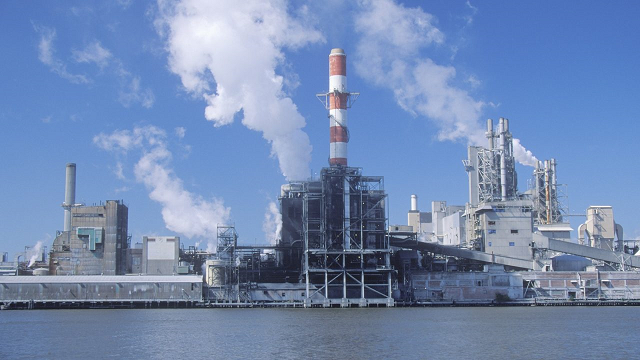Scientists have developed a new system that makes using renewable energy for industry more viable.
This article explains why this has been difficult previously and is suitable for use with Year 7 or 10 Earth and Space Science students.
Word Count: 534
Heavy industry’s dependence on natural gas could be greatly reduced after new research that combined renewable energy and low-cost thermal storage to deliver heat for high-temperature industrial processes.
Using renewable energy for industry which require high-temperatures has previously been thought of as a stumbling point for reducing emissions.
Research indicates around 20 per cent of global fossil fuel emissions are currently produced by industry, largely through burning natural gas to create heat for various processes in the manufacture of products such as paper, chemicals and mineral goods.
The industrial sector is the third-largest contributor to greenhouse gas emissions in the world, and as such, faces mounting pressure to reduce its carbon footprint.
High-temperatures using wind and solar energy
Researcher Rhys Jacob, from UniSA’s Barbara Hardy Institute, explains the system developed by his team can deliver industrial heat at temperatures between 150 and 700°C using renewable energy from solar or wind combined with a novel approach to energy storage.
“Rather than trying to store renewable electricity in a battery, our system uses electricity to generate heat and then stores that heat in a bed of rocks and phase change materials, so it can be available on demand for high temperature applications,” Jacob says.
“We can currently deliver temperatures up to around 700°C, which is adequate for many processes in industries like paper milling, agriculture, mineral operations and food production.”
In addition to the environmental benefits of emissions-free operation, the system is also economically competitive, offering potential savings against increasingly unstable gas prices and more cost-effective storage than battery technology.
“Gas prices have gone through the roof lately, which is a key incentive for industry to find alternatives, and storing heat is also a magnitude or two cheaper than storing energy in batteries,” says Jacob.
Low cost installation
Despite its industry-changing potential, the technology is comprised of relatively basic components, meaning initial installation costs are low, and ongoing maintenance requires no specialist expertise or costly replacement parts.
“One key advantage of this system is current staff in most operations could maintain it without any training, which ensures it is extremely easy to integrate into an existing business,” Jacob says.
This easy integration also ensures the system can operate in conjunction with existing gas-fired heating units, providing manufacturers greater flexibility and reliability in the production cycle.
“The heat storage capacity in the system should be sufficient to cover most fluctuations in renewable energy input, but if at times there is a shortfall, gas could still be brought online as needed.
“Similarly, you could use our system as a pre-heater in applications like cement production, which requires air temperatures up to 1400°C.
“In both these scenarios, the combination of our system with existing technology could see a significant reduction in operating costs and greenhouse emissions,” says Jacob.
The research team currently has one working prototype located at the Barbara Hardy Institute at Mawson Lakes, and is developing a second, slightly refined version of the system that should be suitable for full commercial operation.
Other research around the project is leading to potentially ground-breaking advances in the thermal storage capacity of phase change materials and the efficiency of heat-to-energy conversions, indicating growing opportunities for innovation in related areas
Log in or Sign up for FREE to download a copy of the full teacher resource






